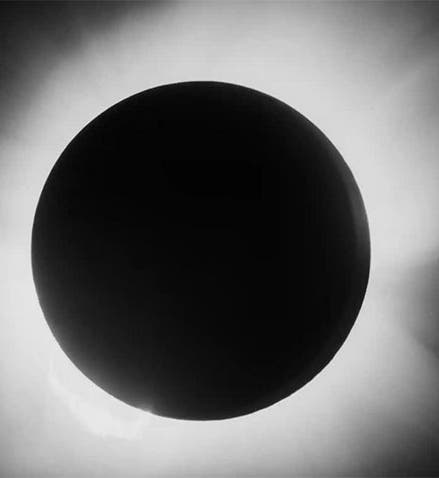Scientist of the Day - Arthur Eddington and Frank Dyson
Arthur Stanley Eddington, an English astronomer and mathematician, was born Dec. 28, 1882. Eddington was one of the early English converts to Einstein’s general theory of relativity, first published in 1915. Einstein, in his paper, noted three effects that were differently predicted by Newtonian gravitational theory and general relativity, and which therefore could provide tests for his hypothesis. One of those concerned the bending of starlight by a large gravitational mass. Newtonian theory predicted a small deflection, general relativity a deviation about twice as large. Testing the prediction was a problem, because the only mass large enough to produce a measurable deflection to a scientist on Earth was the Sun, and stars whose line of sight graze the Sun are obscured by the Sun's own light. But it was soon realized that during a total solar eclipse, when the Moon blocks the Sun’s light, it might be possible to photograph the eclipse and record the positions of stars whose light passes near the Sun. Measurements could then be made of the photographs, to determine to what extent the stars were out of position, and whether it accorded with Newtonian theory, or with Einstein, or neither.
The Astronomer Royal of England, Frank Watson Dyson, was born Jan. 8, 1868 (see portrait). Dyson, like Eddington, was interested in testing Einstein’s predictions, and he realized that in the late spring of 1919, a large apparent Moon would produce an exceptional solar eclipse. Accordingly, he organized and arranged support for two eclipse expeditions, the purpose of which was to photograph the Sun and the surrounding sky during totality. He needed to organize expeditions because the path of totality inconveniently avoided England, North America, and Europe. and instead traced a path across northern South America and central Africa. Dyson selected Principe, an island in the Gulf of Guinea off the west African coast, and Sobral, a town on the coast of Brazil, as the sites for the British observations. The head of the delegation to Principe was Eddington (see portrait). The instrument set-up at Sobral can be seen here.
The eclipse occurred on schedule on May 29, 1919, and totality lasted for almost 7 minutes, an unusually long time for a solar eclipse. Many photographs were taken during the lengthy eclipse, Eddington made his measurements of star positions, and in November of 1919, it was announced that the results confirmed Einstein's predictions. Surprisingly, this was heady stuff for many newspapers around the world. On Nov. 10, 1919, The New York Times ran a headline "Stars all Askew in Heavens," and praised the work of Einstein, whom the newspaper had never before mentioned in print (second image). Einstein became, literally overnight, the most famous physicist in the world, and he would carry that burden until his dying day.
In the years since the famous “Eddington experiment,” many have criticized Eddington’s results, doubting that they supported Einstein’s predictions the way Eddington claimed. The modern consensus, however, is that Eddington's conclusions were valid. Ironically, it was not his own photographs taken at Principe that provided the necessary evidence, but those taken at Sobral, where the skies were clearer (first image).
Most of the fanfare for the confirmation of Einstein's general relativity has always been directed at Eddington, but much of the credit should go to Dyson, who proposed the expeditions and secured the funding from the Royal Society (RS) and the Royal Astronomical Society (RAS). He was also the one who read the paper confirming Einstein to a joint meeting of the RS and RAS on Nov. 6, 1919, and he was the lead author of the paper when it was published in 1920. So we have made him a joint Scientist of the Day.
You have probably observed that no stars are visible in our first image at the resolution we have available. One of the Sobral photographs was recently subjected to high-resolution scanning and digital restoration by the European Southern Observatory (ESO), and then annotated to denote star positions. The result is remarkable; you can see it here.
Dr. William B. Ashworth, Jr., Consultant for the History of Science, Linda Hall Library and Associate Professor emeritus, Department of History, University of Missouri-Kansas City. Comments or corrections are welcome; please direct to ashworthw@umkc.edu.







